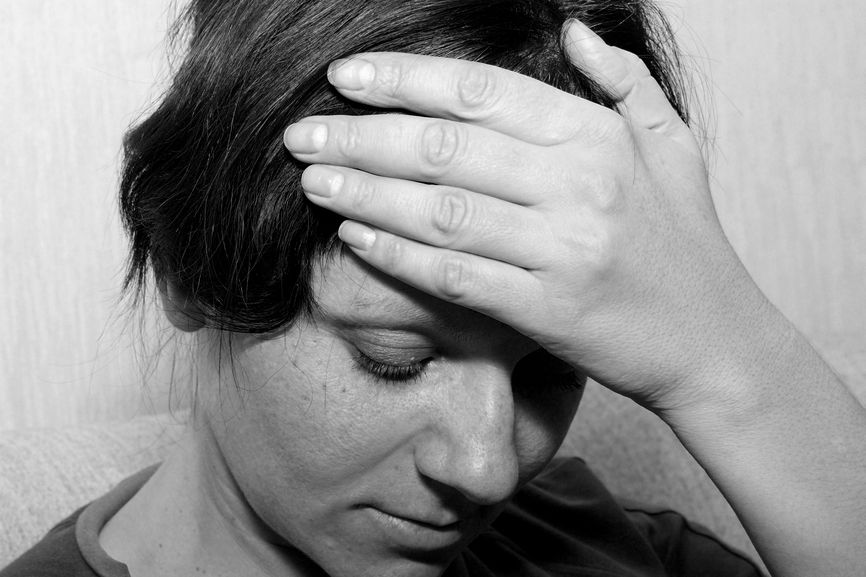

Depression affects 1 in 10 Americans at some point in their adult lives. Many people affected by depression come in for massage therapy services. As therapists, we often have no idea the client is suffering until they break down and “lose it” on our table, and we are suddenly dealing with an emotional crisis.
Symptoms of Depression
Symptoms of depression vary widely and include feelings of sadness, irritability and tension, decreased interest or pleasure in activities or hobbies, loss of energy, change in appetite, changes in sleep patterns and difficulty sleeping, along with difficulty concentrating and feelings of worthlessness, disappointment and hopelessness. Nicole Cutler, L.Ac. shared with us the biochemical changes that occur from depression and how massage therapy impacts positively on stress hormones such as serotonin and cortisol in her article “Bodywork’s Therapeutic Role in Depression.”
Unfortunately, our clients do not always tell us they are suffering from depression, often because they themselves are unaware of it. Occasionally a client will know that they are experiencing depression and be open enough to share that with us at the beginning of the session, but this is not necessarily the case. So if they are unaware or are not sharing this information with us, how can we know when we are working with someone who is suffering?
Here are seven tips to determine if the client may be battling depression:
-
- Intake forms: it is a good idea to add Depression and/or Stress to the list of conditions on our intake forms as this may prompt clients to alert us to the problem. Often, having a condition listed allows clients to share information that they would not volunteer if they must fill in the blanks.
- Note the medications clients may list on their intake forms. If they are listing psychotropic medications, they are most likely dealing with depression.
- How is the client’s affect? Are they sad, restless or unfocused? Do they have trouble managing the “housekeeping” of the appointment – scheduling, intake forms, paying? Perhaps they are overly stressed, or perhaps they are dealing with the fog of depression.
- Clients asking for “relaxation massage” or “stress relief” are often struggling with depression and seeking relief.
- Crying on the table or during the session may be a signal of depression, and most certainly is a signal that the client is feeling overwhelmed. The changes in the parasympathetic nervous system during massage often result in the emotional releases that are expressed with crying.
- When a client is talking to us about a major life event such as a divorce or death in the family, it is wise to be on the lookout for other signs of depression.
- It is also a good idea to be aware of related conditions which often go hand-in-hand with depression, such as obesity, heart disease, fibromyalgia, those living in chronic pain or with life situations such as unemployment, recent divorce or death of loved one. Seasonal Affective Disorder (SAD) can also lead to depression. Furthermore, women tend to suffer from depression more than men, especially after childbirth, with 1 in 10 women suffering from post-partum depression. Being aware of the link between these conditions and depression will serve the therapist and client well.
Working with Depressed Clients
Massage is a wonderful tool in the fight against this lonely condition. Getting a massage makes the client feel a sense of worth for taking care of themselves, a feeling of importance as the therapist focuses on them, a physical and emotional sense of relaxation and offers a mental reset as they take the time to mentally rest, focusing on their breathing and the touch. As massage therapists, we offer a lot to these clients while working well within our scope of practice.
When working with clients who have depression, it is best to offer a moderate pressure Swedish massage. Depressed clients can often feel “beat up” emotionally which, due to hormone and chemical changes in the body, can translate into physically feeling that way. Body aches and pains can also be a sign of depression, as the body reacts to the emotional toll. Our massage should be moderate, allowing them to reach a state of relaxation and bliss. We do not want to add to their stress by working so deeply that they can only focus on the discomfort. Massage should be an enjoyable experience – they already have enough challenges!
When clients cry or talk to us about their depression while we are working, we walk a fine line between holding the space for them to feel their feelings and getting overly involved in their lives. We must remember we are not counselors and cannot offer suggestions, solutions or advice. Our role is limited to being a listener. As part of our professional network, massage therapists should have contact information on hand for local counselors so that we can refer clients to these professionals if we suspect they are dealing with depression. While massage therapy can help them in their battle against depression, it will not cure the disorder. Left untreated, depression can become serious – even leading to suicide.
Warning
If you feel a client may be engaging in self-destructive behavior or possibly considering suicide, it is important to address the issue. Talk to the client and urge him or her to seek help. Offer to help the person set up an appointment with a qualified professional. If your client says he or she will call later, follow up to make sure it happens. Call a local crisis center or assist them in doing so. If the client talks about having a plan for, or intention of committing suicide, call 911 and get immediate help.











